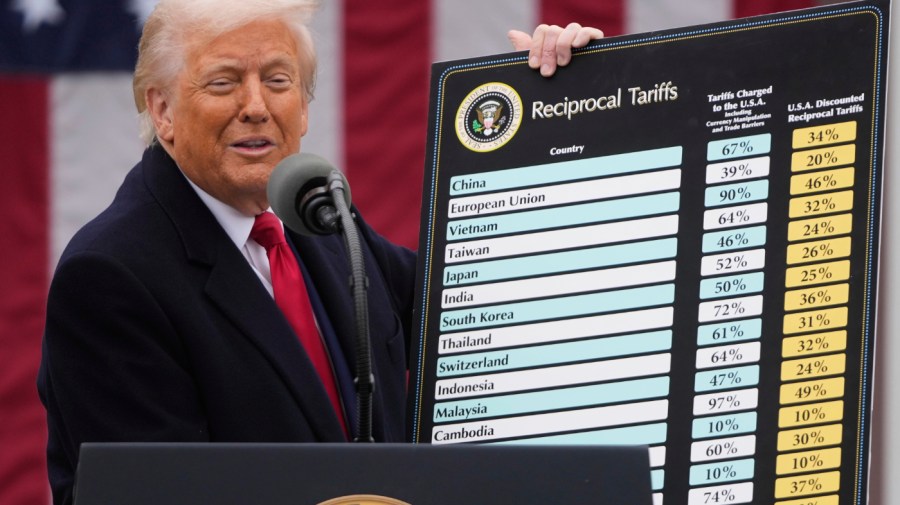Why two courts might see Trump’s tariffs the same way

On July 31, the Court of Appeals for the Federal Circuit heard arguments over President Trump’s tariffs under the International Emergency Economic Powers Act.
The legal question is simple enough: Can a president invoke a “national emergency” under the act to rewire U.S. tariff policy? The Court of Appeals will likely say no. But will the Supreme Court agree?
The Court of Appeals and the Supreme Court look at a case like this through different lenses.
At the Court of Appeals, the focus is on the statutory text, legislative history, past precedent and the limits Congress built into the International Emergency Economic Powers Act. Expect a close reading of whether “regulate importation” can be read to mean “raise tariffs,” and scrutiny on what guardrails, if any, Congress had in mind when it granted the president such sweeping emergency powers.
The judges will parse the interplay between the 1977 enactment of the act and the Tariff Act of 1930, as well as the trade statutes Congress has passed since, particularly the Trade Act of 1974.
The Trade Act of 1974 introduced or amended a number of authorities permitting tariffs, notably Section 122 for addressing balance of payments problems, Section 232 for national security concerns and Section 301 concerning unlawful or unfair trade practices.
They will weigh whether Congress meant for the act to function as a backdoor to bypass those statutes, all of which contain procedural and substantive limitations that Trump’s tariffs sidestep.
Appellate judges will ask whether reading the act broadly enough to cover Trump’s tariffs would render these other trade statutes superfluous. They will consider whether Congress, in giving the president a wide berth in foreign policy, nonetheless drew a line at tariff policy — a line Trump has now crossed.
The Court of Appeals is also more likely to dwell on the record: the president’s own widely varying statements about the tariffs’ economic goals, the absence of a clear national security rationale and the emergency declaration’s thin connection to the specific imports targeted.
This matters because the International Emergency Economic Powers Act was designed to respond to genuine, unforeseen emergencies, not to give the president a standing license to rewrite trade policy or to respond to long-standing concerns.
The Supreme Court is a different story. When the act’s tariff cases get there (and they almost certainly will) the justices will step back. This isn’t to say they will ignore statutory text, but their focus will be on the broader separation-of-powers stakes, starting with the Constitution’s grant of the power to raise tariffs to Congress, not the president.
For the court’s conservative majority, the threshold question will be how much deference to give the president in matters of foreign affairs and national security.
Historically, the court has been reluctant to second-guess the executive on these grounds, especially when Congress has delegated authority in broad-brush terms, as it did in the International Emergency Economic Powers Act. But that deference has limits, and recent opinions have shown an appetite for policing the boundaries of congressional delegations, particularly when they threaten to swallow entire statutory regimes.
Another key difference: The Supreme Court will be thinking about precedent. A ruling that blesses Trump’s use of the act for tariffs would not just rewrite trade law — it would expand the president’s emergency powers into new terrain, with no obvious limiting principle. Future presidents could invoke it to sidestep Congress on taxes, regulations, even domestic commerce, so long as they framed it as a foreign policy “emergency.”
That’s a slippery slope the justices may be unwilling to grease, especially given their recent skepticism about default deference to the executive branch.
The Supreme Court will also be more attuned to the political fallout. Invalidating the tariffs would be a high-profile rebuke to Trump’s trade agenda. Upholding them could invite a wave of International Emergency Economic Powers Act-based policies far beyond trade. The justices know that whichever way they go, the decision will become a touchstone in debates about executive power.
So expect the Court of Appeals to treat this as a statutory case with clear rules and boundaries, and the Supreme Court to treat it as a constitutional case with far-reaching implications.
One court will be asking, “What did Congress mean when it passed the International Emergency Economic Powers Act?” The other will be asking, “What happens to the balance of powers if we read the act this way, particularly given that the Constitution grants Congress, not the president, the power to impose tariffs?”
If history is any guide, the Court of Appeals is likely to strike down the tariffs, forcing the Supreme Court to decide whether to take the case up and make it stick. If it does — and it should — its ruling will be less about the fine print of the act and more about the future of presidential power.
Trump would still have other options to enact tariffs. But each includes procedural requirements that will slow and limit the breadth of the president’s protectionist roll out. That’s why he liked what he thought he saw in the act.
The Supreme Court must make clear that he overreached.
Marc L. Busch is the Karl F. Landegger Professor of International Business Diplomacy at the Walsh School of Foreign Service, Georgetown University. Jennifer Hillman is a professor from practice at the Georgetown University Law Center.